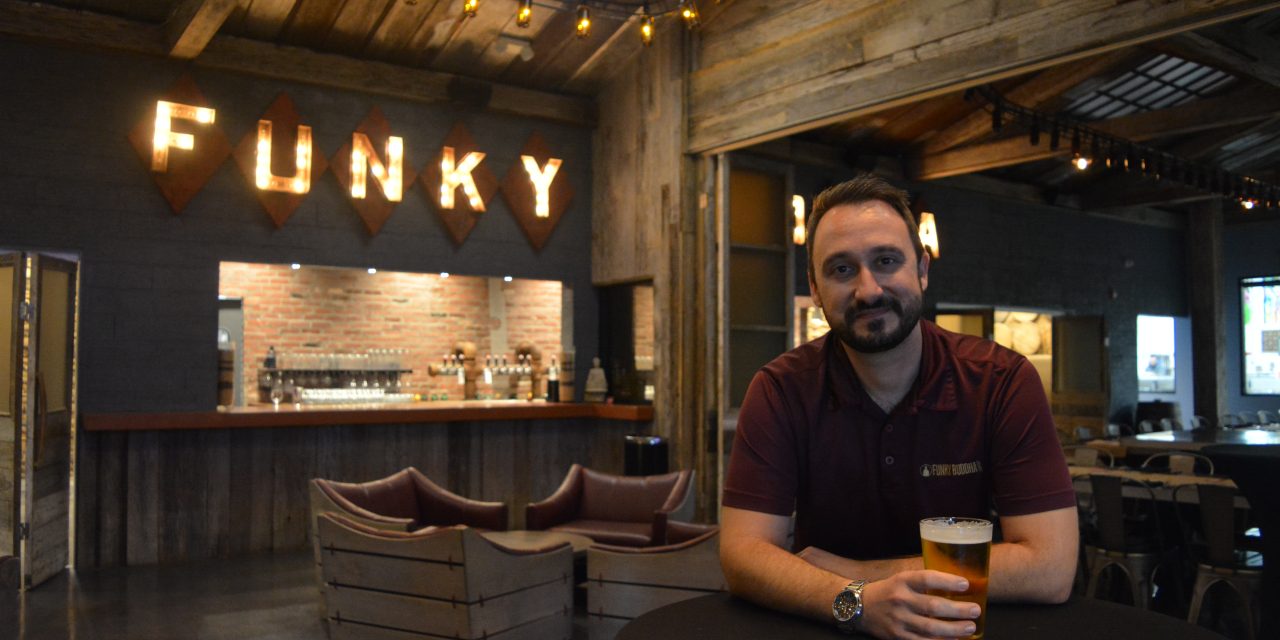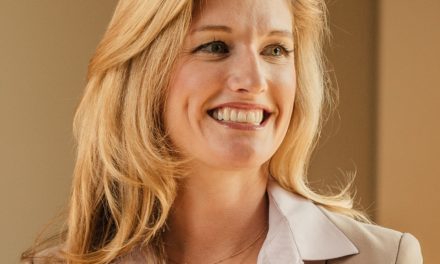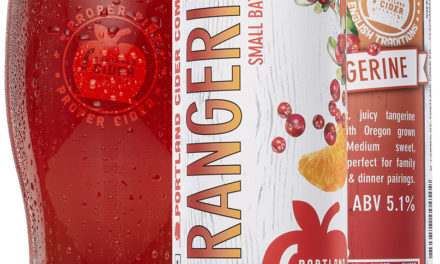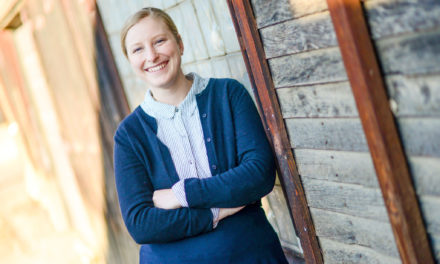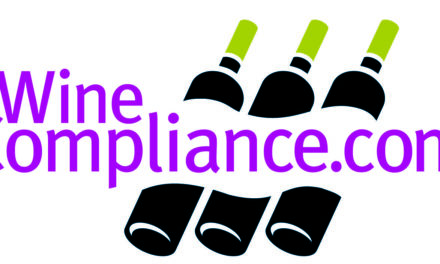An effective website is imperative for any consumer-facing business. Today’s beverage marketers need to reach consumers in meaningful ways, and websites are fundamental for such a task. Multiple factors contribute to a great website, but it begins with three foundational principles: graphics that accurately portray the brand image, intuitive navigation, and optimized functionality.

“Today, it has to start with how it looks on mobile and then work backwards.” —Ron Scharman
Because consumers are on the go, mobile optimization is critical, says Astra Digital Marketing CEO Ron Scharman. “More than 60 percent of people are accessing websites on mobile devices; 65 to 70 percent of people read their email on mobile.” This warrants a “mobile first” approach to design. “Today, it has to start with how it looks on mobile and then work backwards. You shouldn’t build a desktop site and then say, ‘Now let’s see what it looks like on mobile.’”
According to the Pew Research Center, 77 percent of Americans own smartphones. Seven-in-10 use social media to connect with each another, engage with news content, share information, and for entertainment. Pew also finds that 79 percent have made an online purchase of any type; 51 percent have bought something using a smartphone; and 15 percent have made purchases by following a link from social media sites.
What that means, says Scharman, is that all content, whether it’s an advertisement or sought information, has to fit the format. “There has to be a very critical, rigid requirement or it’ll make the site look bad.” And regardless of where a consumer engages with a brand, consistency is key. “Consistent imagery, consistent messaging, consistent look and feel—it’s what we call a ‘seamless-across-all-channels marketing strategy.’”

“The first step for positive digital marketing is to get your digital house in order.” —Emily Harrison
Get Your Digital House in Order
Emily Harrison, director of marketing for Hall and Walt Wines in Northern California, says the opportunity to increase revenue and update their websites was the impetus for a new site. While each wine brand stands on its own (hallwines.com and waltwines.com), a central shopping cart unifies the two luxury brands.
After the launch of the new websites, the company’s e-commerce business surged. Website traffic increased, conversion rates and average order values went up, and the e-commerce business grew year-to-year. Harrison is quick to say she doesn’t attribute those factors solely to the new website. “The first step for positive digital marketing is to get your digital house in order. That’s what we did with the website. Then we changed our marketing tactics, our ads, and our emails. We’re optimizing everything in our digital marketing tool belt. It’s really a combined effort from having cohesive marketing campaigns all working together with an optimized site.”
Harrison has observed that monthly traffic to the website is increasingly coming from mobile devices. Desktop traffic is usually around 50 percent, followed by mobile at about 35 percent and tablets around 15 percent.
She explains how the website and social media connect in marketing campaigns. “For example, for a new product release, we update our homepage to feature the product. Then we send an email using the same image or something very close that feels connected to it. Our organic social efforts and paid social efforts will feature that same image and message. It’s really all about being cohesive and having campaign-driven marketing, opposed to having separate strategies for the websites, email campaigns, and social.”
Triple the Metrics
Funky Buddha Brewery in Oakland Park, Fla., launched its new site (funkybuddhabrewery.com) in August 2016. The importance of a mobile-friendly site can’t be overstated, says Brand Director John Linn. “Sixty-six percent of our traffic originates from a mobile platform. If you don’t have a mobile-friendly website, you’re alienating that huge portion of your potential customer base.”
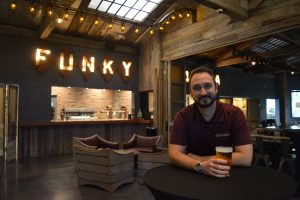
“If you don’t have a mobile-friendly website, you’re alienating that huge portion of your potential customer base.” – John Linn, Funky Buddha Brewery
Increased traffic after the relaunch was the prelude for what Linn says was the biggest metric to come. “The new site has a lot of return visitors, and regular traffic is up as well, in the 25 percent range. The biggest gain in metrics was how long people were on the site, growth in spending money on the site, and how many different pages they went to. It all tripled.”
Demonstrating the social media aspect, Linn says, “We backlink from our social media to our website quite often. The attention span on social media is short, so we’ll write longer content on our website and then backlink to it. We’re always trying to feed traffic from social media to the website.” He says the reverse is also true, and every webpage has tools for users to share the content on their social platforms.
“My pitch to ownership was that the website is the most important piece of marketing we have,” he says. “It’s ground zero to talk about the brand and we have the forward-facing component of our brand in front of the public at all times.”

“Our top-visited pages are related to our cider products, so we want to make sure those pages are easy to find and well-optimized so they show up in organic searches.” —Kim Vavrick
Kim Vavrick is another advocate of mobile optimization. As communications manager of Fennville, Mich.-based Virtue Cider, she says half of the company’s site visitors are on mobile devices, and product information is most important, followed by content. “Our top-visited pages are related to our cider products, so we want to make sure those pages are easy to find and well-optimized so they show up in organic searches, as well,” she explains. “The next most-visited areas are related to our contact information. People can visit our cider houses in Fennville, so we want to ensure the information is easy to find, clear, and fully updated.”
The integration strategy between social media and website is a two-pronged approach, she says. “We have planned, longer-form content originating from our website that we break out for distribution on our various social channels, and we also have organic content—such as a video of a new cider that our cidermakers are playing around with—that will be posted to social first, and will later be integrated into a larger story posted on our website.” She says moving the content both ways (website-first or social-first) keeps it engaging, varied, and authentic.
Beyond the Bottle
Whiskey maker Westland Distillery in Seattle, Wash., currently uses several domains—one for its main distillery and others for special programs such as its Garryana special release and annual Peat Week celebration. This year it will bring all of this content together under one domain with a new website that will live at westlanddistillery.com. Director of Marketing Steve Hawley says the new design is far more editorial in nature.
The company is big on sharing its lifestyle through storytelling. “We have a lot of compelling new content, from films to images, podcasts, and editorial-style narratives of the projects we’re engaged with,” he says, adding that the deep content “represents a broader idea of what our brand is all about. Certainly, it’s expressed in whiskey, but it goes farther than what’s in a bottle.”
According to Hawley, Westland’s passionate consumers drink up all the minutia. “We have a large following of whiskey connoisseurs and malt heads, as we call them,” he says. “They’re very eager to dive into the details, and there’s no end to the depths of nerdy-ness and detail in whiskey—certainly in our case. We’re very committed to being transparent about how we make our whiskey and with that comes an ungodly amount of information.”
Recognizing the desktop is a better environment for such depths of knowledge, he says the company’s mobile version is more reductive in nature, with streamlined storytelling.
“A website is a living thing,” he concludes. “It’s not static, especially when it’s so content-forward. The idea is the website lives and breathes and changes all the time.”

